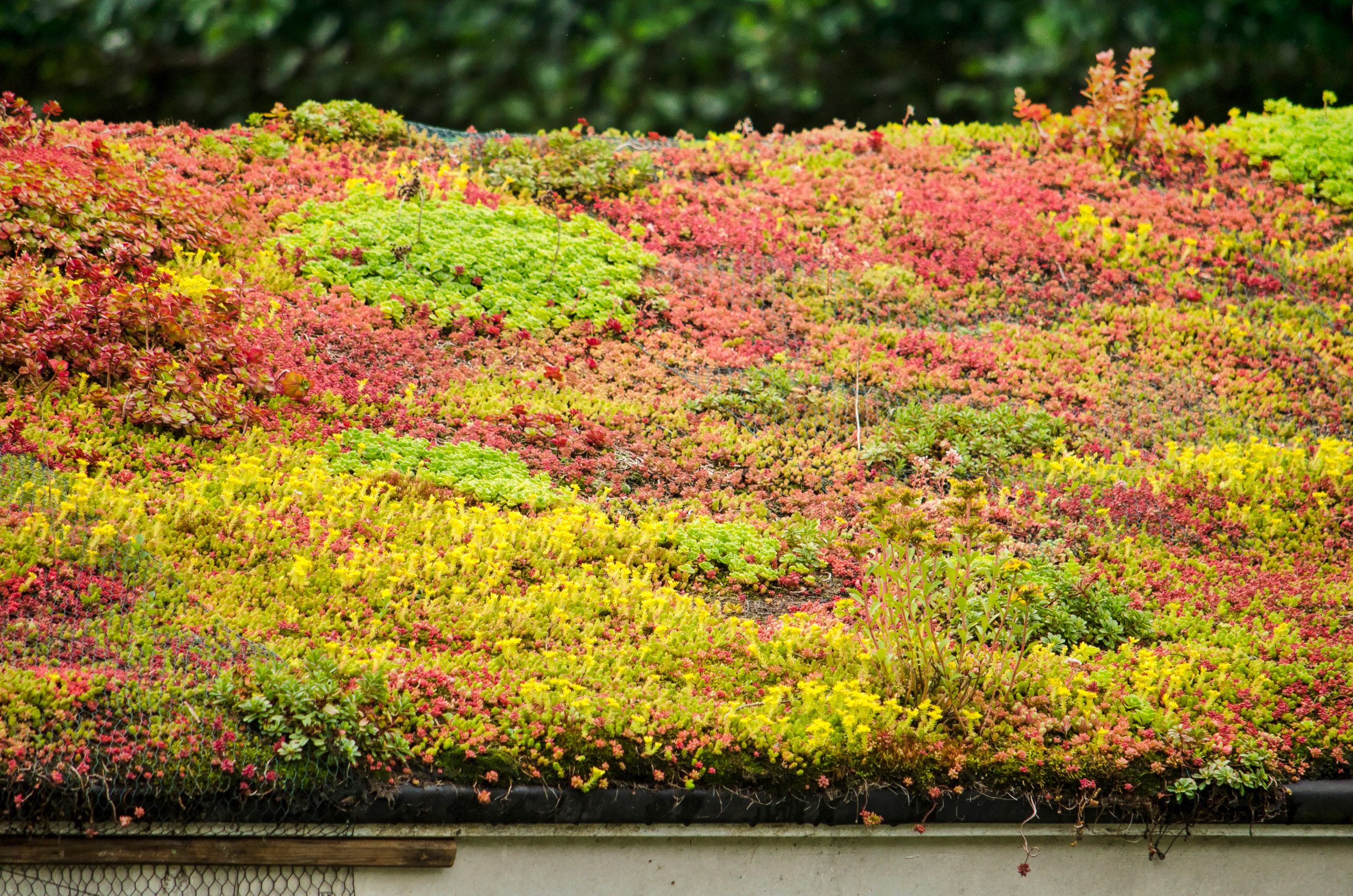Green roofs have been gaining popularity in the UK, and for very good reason. As population growth and demand for energy continue to increase, so does the need for sustainable solutions to protect the environment.
Not only do they look fantastic and provide a beautiful aesthetic to any building, but green roofs provide a number of environmental benefits and held to combat climate change.
Are you considering a green roof for your home or commercial property in an urban – or suburban – area? Then read on. In this blog post, we’ll explore five of the major environmental benefits of green roofs in 2023.
1. Improved air quality
Green roofs help purify the air in cities by trapping pollutants and reducing harmful emissions. They also absorb carbon dioxide and release oxygen, helping to reduce the city or suburban area’s carbon footprint. Green roofs can work alongside trees as the ‘lungs of the city’.
Improved air quality leads to better health for everyone and can help reduce the risk of respiratory and other illnesses.
Additionally, green roofs can help reduce noise levels by absorbing sounds. This makes urban environments more liveable and improves the quality of life for people living in busy, highly populated areas.
2. Reduced energy costs
Green roofs help reduce energy costs by providing insulation and cooling. They absorb heat during the day and release it at night, helping to regulate the temperatures of buildings. This can lead to lower energy bills for homeowners and businesses alike.
Energy is not only expensive these days, but comes at a high environmental cost. So any way we can use less energy is a really good thing.
Green roofs also help reduce the dependence on air conditioning, which is increasingly popular and consumes a lot of energy. By regulating temperatures naturally, green roofs can help reduce energy consumption and lower energy costs.
3. Stormwater management and flood reduction
Green roofs act as a natural filter for stormwater runoff, helping to prevent flooding and soil erosion. They absorb and store rainwater, reducing the amount of runoff that can overwhelm pavements and drains in areas lacking in grass and vegetation and cause flash flooding.
Stormwater runoff after heavy rainfall can also cause pollutants to run into rivers and waterways. The way in which green roofs absorb a lot of rainfall helps protect rivers and streams from this pollution from runoff, too.
4. More biodiversity and a habitat for wildlife
Green roofs promote biodiversity, which is super important in urban and suburban areas. They provide an important habitat for birds and other wildlife, helping to create a more diverse urban environment.
As more and more development takes place, wildlife can lose its habitat in urban areas. So green roofs are an important way to help. They reduce the impact of urban development on natural habitats by providing a safe place for wildlife to live and breed, helping to protect endangered species and preserve biodiversity in cities. These are some of the reasons that planners are so keen on new developments featuring green roofs.
Green roofs also provide a home for insects such as pollinators, which play a really important part in the UK’s food chain. Insects and pollinators help increase food production in urban areas and can help reduce the need for chemical pesticides.
5. Improved aesthetics and better wellbeing
Green roofs help to improve the look and feel of cities and suburban areas through the much-needed extra greenery. A roof with plants, trees and grasses simply creates a much more pleasant environment than a tile, slate or fibreglass roof!
Our cities are packed full of buildings, and green roofs help to reduce the visual impact of urban development by providing a more natural environment. The aesthetic helps to soften the hard edges of cities and simply makes them more inviting and enjoyable to live in.
Finally, green roofs also help to reduce the urban heat island effect, which can make cities less comfortable and less liveable. We’ve all been to a city where we feel like we’re melting and the concrete and hard surfaces are unbearably hot. Reducing the urban island heat effect improves the quality of life for residents and can make the area more attractive to visitors.
Consider a green roof if you are serious about improving the environment
It’s clear that green roofs offer many environmental benefits: improved air quality, reduced energy costs, stormwater management, more biodiversity and a habitat for wildlife, and improved aesthetics.
If you are looking to reduce your environmental impact and make your urban or suburban area more liveable, then these benefits make green roofs an attractive option and something you should consider.
The Genesis Gardens team are experienced in green roof design and installation. If you would like to explore the possibility for yourself, call or email us to arrange a no-obligation consultation.

